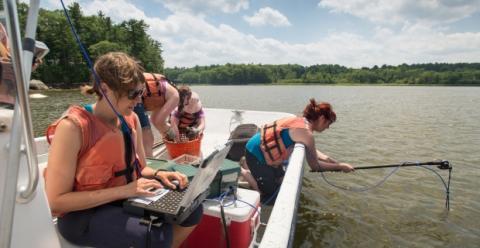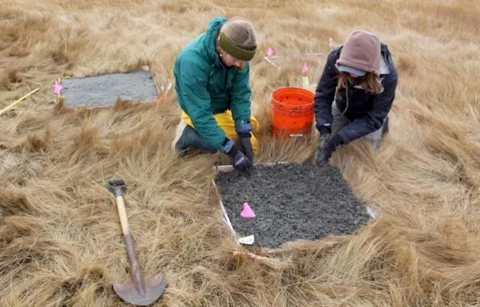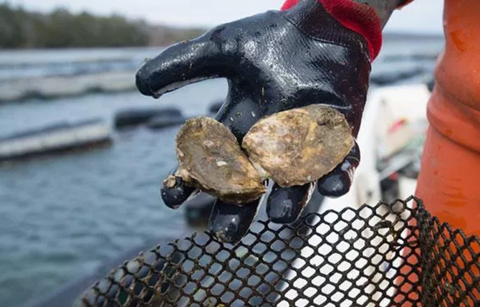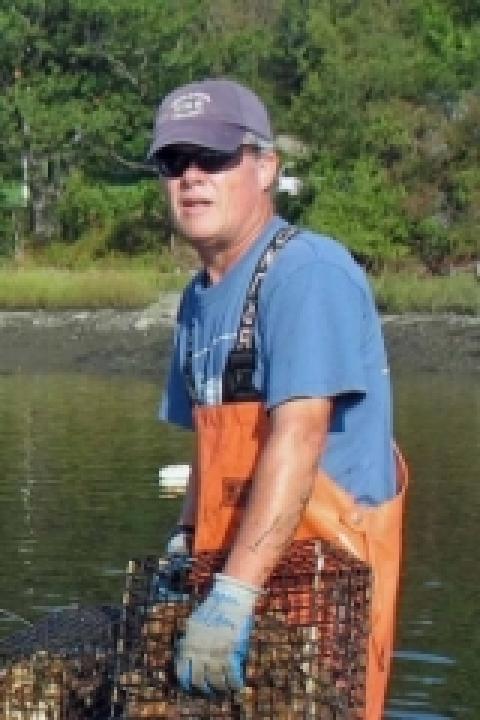
Jackson Estuarine Laboratory (JEL) is located five miles from the Durham campus on the shores of Great Bay Estuary, one of the largest estuaries in northern New England. JEL features well-equipped facilities where scientists conduct field-based and experimental research on physical and biological components of coastal ecosystems.
Research at JEL has advanced our understanding of coastal ecosystems, environmental quality, and connection between watershed and human health in New Hampshire, the region and the world.
JEL serves as the physical infrastructure for the intellectual capital present at the Lab, supporting national and internationally recognized researchers who work in support of resilience research to inform adaptive management and decision-making at federal, state and local levels and in partnership with nongovernmental and private sectors.
Contact
Nate Rennels, Assistant Director
Facilities & Marine Operations
nate.rennels@unh.edu
(603) 862-5127
Franny Lux, Marine Technician
franny.lux@unh.edu
(603) 862-5129
David Burdick, Director
david.burdick@unh.edu
(603) 862-5129
Jackson Estuarine Laboratory maintains a well equipped laboratory as well as a fleet of small estuarine research vessels. The building and adjoining greenhouse have full seawater capabilities on a year round basis. Mesocosms are maintained outside during the summer season. Within the facility JEL has: a water quality laboratory fully equipped to maintain and calibrate multiparameter datasondes (YSI EXO models) with full instrument payloads, maintain a wide range of oceanographic sensors (nitrate, phosphate, pH, pCO2, and light), and perform analyses (fluorometer); sedimentology and benthic laboratories (equipment for grain size, organic content and infaunal identification, field fluorometer, current meters, towed video); salt marsh, phycology and seagrass labs (RTK, survey equipment and drones); and microbiology laboratory equipped for microbial community analysis, PCR, gene probes, spectrophotometer, and traditional culture and molecular techniques (gel electrophoresis, phase contrast/epifluorescence microscope, centrifuges, ultrasonic homogenizer, walk-in coolers, a -80°C freezer, incubators, a laminar flow hood, autoclave, ovens).
Boating facilities at JEL include a causeway with a 2,000 pound capacity crane and a floating dock with slip spaces for up to seven boats. There is also a tide-restricted boat ramp on the adjacent NH Fish and Game Department property. Boats available at JEL include three outboard-powered 19-foot center consoles.
JEL is critical infrastructure to a number of state and federal agencies (including their funded state-level programs), and plays a central role in helping implement federal, state and local coastal and estuarine management priorities. Local collaborators include most of the individual coastal towns, several multi-town collaborations (e.g., Municipal Coalition, Seabrook Hampton Estuary Alliance), county planning offices, and several NGOs (e.g., Conservation Law Foundation, The Nature Conservancy). The USEPA (through the National Estuary Program), USFWS, US Army Corps of Engineers, USGS and NOAA through the National Estuarine Research Reserve, National Sea Grant College Program, National Coastal Program, and IOOS all rely on the JEL in shaping and implementing coastal resilience planning and work across the ~1100 sq mile coastal watershed of NH and southern Maine. With a focus on coastal economic, infrastructure, ecosystem, and social resilience, JEL functionally supports water quality monitoring as well as monitoring and restoration activities of critical habitats such as seagrasses that cycle and process nutrients and salt marsh and coastal dunes that buffer against sea-level rise and increasing storms, and facilitates targeted investment that supports the state’s emerging aquaculture industry.
-
Research Associate ProfessorDirector, Jackson Estuarine LaboratoryEmail: David.Burdick@unh.eduPhone: (603) 862-5129
-
Research Scientist, School of Marine Science and Ocean Engineering, Ocean Process Analysis LaboratoryEmail: Tom.Gregory@unh.eduPhone: (603) 862-4397
-
Research Associate ProfessorNatural Resources and the EnvironmentAssociate Director, N.H. Sea GrantEmail: Stephen.Jones@unh.eduPhone: (603) 862-5124
From UNH to Jackson Estuarine Laboratory
- Proceed south on Main Street through the center of Durham staying in the right lane.
- Continue past the Post Office on the left and the Community Church on the right.
- Get into the right lane approaching the traffic signal and take Rt 108 toward Newmarket for about 1/2 mile.
- Turn left onto Durham Point Road. Drive 3.8 miles.
- Turn left onto Adams Point Road through a chain link fence/gate that has a sign “Jackson Estuarine Laboratory” on it.
- Drive slowly on Adams Point Road for one mile into the parking lot. Traffic travels both directions on this curvy, hilly, one lane road.
From the Portsmouth, NH traffic circle to Jackson Estuarine Laboratory
- Take the "Durham/Dover/Concord" exit onto the Spaulding Turnpike off the Portsmouth traffic circle.
- Proceed about 3 miles past Pease International Trade Port on left, Fox Run Mall on right, and over a high-rise bridge; get into right lane.
- Take exit 6W ("Rt 4 to 202 W" and "Durham/Concord") onto Rt 4 west.
- Continue on Rt 4 west for about 4 miles and take "Durham/Newmarket" exit (Rt. 108) on right.
- At end of exit ramp, turn left onto Rt. 108 and continue for about 1 mile to traffic signal.
- Turn left at the signal onto Rt 108 toward Newmarket and proceed for about 1/2 mile.
- Turn left onto Durham Point Road. Drive 3.8 miles.
- Turn left onto Adams Point Road through a chain link fence/gate that has a sign “Jackson Estuarine Laboratory” on it.
- Drive slowly on Adams Point Road for one mile into the parking lot. Traffic travels in both directions on this curvy, hilly, one lane road.
From Concord, NH to Jackson Estuarine Laboratory
- From Concord, take Rt 4 east to the Durham/Lee area; about 25 miles
- Continue on Rt 4 through the Lee traffic circle where Rts 4 and 125 intersect for about 2 miles to the exit for "Fish & Game Region 3" and "University of New Hampshire".
- Turn right at the end of the exit ramp. Stay on this road which turns into Main Street. Continue through the UNH campus and the small town of Durham. Stay in the right lane.
- Continue past the Post Office on the left and the Community Church on the right.
- Get into the right lane approaching the traffic signal and take Rt 108 toward Newmarket for about 1/2 mile.
- Turn left onto Durham Point Road. Drive 3.8 miles.
- Turn left onto Adams Point Road through a chain link fence/gate that has a sign “Jackson Estuarine Laboratory” on it.
- Drive slowly on Adams Point Road for one mile into the parking lot. Traffic travels in both directions on this curvy, hilly, one lane road.
From Manchester, NH to Jackson Estuarine Laboratory
- Take Rt 101 east to Exeter and follow signs, merging to left onto Rt 108; about 25 miles.
- Proceed north on Rt 108 to Newmarket; about 8 miles.
- Drive through the center of Newmarket past the library on your left and over a small bridge. Turn right onto Bay Road just past the bridge.
- Stay on Bay Road/Durham Point Road (name changes after about 2 miles) for 4 miles.
- Turn right onto Adams Point Road through a chain link fence/gate that has a sign “Jackson Estuarine Laboratory” on it.
- Drive slowly on Adams Point Road for one mile into the parking lot. Traffic travels in both directions on this curvy, hilly, one lane road.
Take Rt 108 from the center of Newmarket past the library on your left and over a small bridge.
- Turn right onto Bay Road just past the bridge.
- Stay on Bay Road/Durham Point Road (name changes after about 2 miles) for 4 miles.
- Turn right onto Adams Point Road through a chain link fence/gate that has a sign “Jackson Estuarine Laboratory” on it.
- Drive slowly on Adams Point Road for one mile into the parking lot. Traffic travels in both directions on this curvy, hilly, one lane road.
From Maine on Rt. 95 to Jackson Estuarine Laboratory
- Approaching Portsmouth on I-95 south, take exit 5 "Portsmouth/Dover" and "Durham/Concord" onto the Spaulding Turnpike north.
- Proceed a few miles past Pease International Trade Port on left, Fox Run Mall on right, and over a high-rise bridge; get into right lane.
- Take exit 6W ("Rt 4 to 202 W" and "Durham/Concord") onto Rt 4 west.
- Continue on Rt 4 west for about 4 miles and take "Durham/Newmarket" exit (Rt. 108) on right.
- At end of exit ramp, turn left onto Rt. 108 and continue for about 1 mile to traffic signal.
- Turn left at the signal onto Rt 108 toward Newmarket and proceed for about 1/2 mile.
- Turn left onto Durham Point Road. Drive 3.8 miles.
- Turn left onto Adams Point Road through a chain link fence/gate that has a sign “Jackson Estuarine Laboratory” on it.
- Drive slowly on Adams Point Road for one mile into the parking lot. Traffic travels in both directions on this curvy, hilly, one lane road.
From Massachusetts on Rt. 95 to Jackson Estuarine Laboratory
- Approaching Portsmouth on I-95, move into left lanes and follow signs "NH Lakes" and "White Mountains". This becomes Spaulding Turnpike north.
- Continue north past Pease International Trade Port on left and Fox Run Mall on right.
- After crossing the high-rise bridge (about 2 miles from I-95), get into right lane and take exit 6W (with sign indicating to "Durham" and "UNH") to the right which becomes Rt 4 west.
- Continue on Rt 4 west for about 4 miles and take "Durham/Newmarket" exit (Rt. 108) on right.
- At end of exit ramp, turn left onto Rt. 108 and continue for about 1 mile to traffic signal.
- Turn left at the signal onto Rt 108 toward Newmarket and proceed for about 1/2 mile.
- Turn left onto Durham Point Road. Drive 3.8 miles.
- Turn left onto Adams Point Road through a chain link fence/gate that has a sign “Jackson Estuarine Laboratory” on it.
- Drive slowly on Adams Point Road for one mile into the parking lot. Traffic travels in both directions on this curvy, hilly, one lane road.
Tours of Jackson Estuarine Laboratory can be scheduled by contacting Nate Rennels.
The mission of the Jackson Estuarine Laboratory (JEL) is to advance science, support education, and inform management, primarily through research activities that increase understanding of estuarine and coastal ecosystems. The only academic laboratory dedicated to the study of estuaries in the Northeast, JEL is located on the shores of the Great Bay Estuary (GBE). Our team of scientists, students and technical staff conduct research, education, and outreach activities to promote the viability and health of estuaries for their sustained use and enjoyment by residents and visitors to the Seacoast.
We envision healthy coastal and estuarine systems that support human and natural communities, provide for sustainable use, and are resilient to natural and human pressures. To this end, JEL scientists work together with partners from New Hampshire, New England and the world to develop new insights and yield knowledge that enhance management of coastal areas and the processes that sustain them.


Supporting local, state and federal agencies
The Jackson Estuarine Laboratory is a proud collaborator in the The Nature Conservancy's project, SOAR: Supporting Oyster Aquaculture and Restoration Project.







